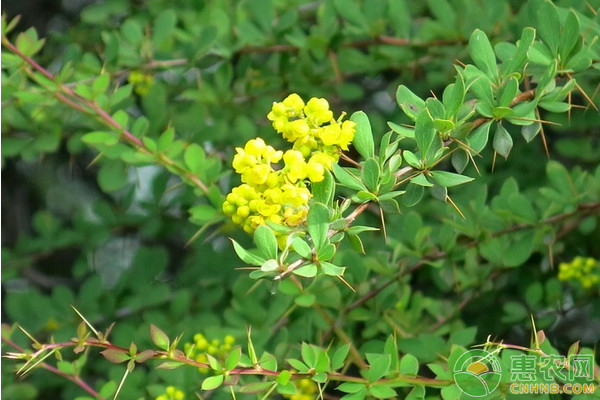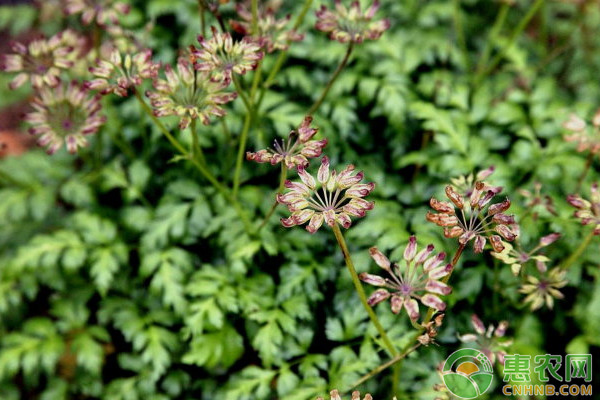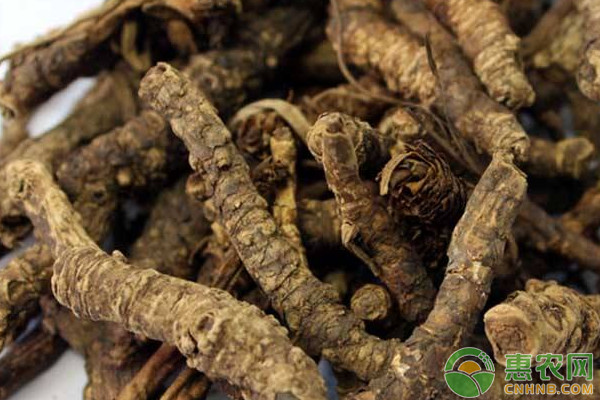High-efficiency cultivation techniques and pest control of Huanglian in Wenjiang District
Recently, the weather is hot and it is very easy to get angry. Xiaobian’s family is going to buy chicken feet and yellow water to drink. Coptis is distributed in Hubei, Hunan, Shaanxi, Gansu, Sichuan and other provinces in China. The following is for everyone to bring about the breeding and pest control techniques of the Huanglian in Wenjiang District for reference! First, land preparation and land preparation Coptis has strict requirements on soil, and it is better to have deep, fertile, loose, well-drained, humus-rich loam and sandy loam soil. The pH value of soil is 5.5-7, avoiding continuous cropping. In the morning and evening, the slope of the semi-yin and half-yang with oblique illumination is most suitable, but the slope should not exceed 30°. Exfoliate the soil before the preparation of the ground. The specific method is: select the humus soil of 7~10cm of soil on the sunny day, pick up the roots and stones, and collect the litter and weeds after the humus is dried. earth. This method is beneficial to improve soil fertility and reduce pests and weeds. After the smoked soil, ploughing 15cm deep, picking up the roots and other debris, applying about 4000kg of farmyard manure per mu to the base fertilizer, and smoothing it evenly, making it 1.5m wide and 30cm high, and the width of the ditch is 50cm. Arched. 1. The breeding method mostly uses seed breeding, seedling transplanting. (1) Nursery It is sown with stored seeds from October to November. Because the seeds are small, the seeds can be mixed with 20 times of fine soil and spread on the noodles. After sowing, it does not cover the soil and covers 0.5~1cm thick dry and finely rotted beef and horse manure. When the winter is dry, you need to cover the grass with a layer of moisturizing. Hunchun timely removed the cover to facilitate emergence. The amount of seeds per acre is 2 to 3 kg. (2) transplanting seedlings Transplanting was carried out in the third year after sowing. It is best to transplant in June, but it should be transplanted in low-altitude areas from February to March or from September to October. Transplanting should be carried out on cloudy days or on sunny days after rain. Take the seedlings with strong growth and more than 4 true leaves, and dig up the roots, cut off some of the fibrous roots, leave 2 to 3 cm long, and plant them in a square of 10 cm each according to the row spacing; The depth of planting depends on the transplanting season and the size of the seedlings. Spring planting or seedlings can be planted slightly, and autumn planting or seedlings can be slightly deeper. Generally 3 to 5 cm, leaving 3 to 4 large leaves on the ground. Usually, the seedlings are dug in the morning and planted in the afternoon. If the seedlings that have been excavated are not finished on the day, they should be spread in the damp and wet place. The next day, they should be soaked and planted before planting. Second, field management 1. Seedling management After planting, the cover should be removed in time before emergence. When the seedlings have 1 or 2 true leaves, the seedlings are 1 cm apart. From June to July, a layer of fine humus soil about 1 cm thick can be removed from the surface to stabilize the roots. The shade shed should be set up before the emergence of the seedlings, one shed and one shed, the shed height is 50-70cm, and the shade is controlled at about 80%. 2. After transplanting the seedlings, the seedlings often have a dead seedling phenomenon, and the dead seedling rate is 10% to 12%. The seedlings should be replenished in time. Generally, the autumn seedlings are planted in June, and the autumn cultivators replenish the seedlings before the germination of the new leaves of Hunchun. It is necessary to use the same age seedlings to ensure that the plants grow consistently. 3. There are many weeds in the cultivating and weeding nursery fields, at least 3 to 5 times per year, and 2 to 3 times per year after transplanting. Such as soil compaction, should be shallow pine topsoil. 4. After the seedlings are planted in the topdressing field, 1400kg of diluted manure is applied per mu, and 140kg of dried cow dung is applied in August-September. The above fertilizers are applied in Hunchun, but the amount of fertilizer can be increased appropriately. 2 to 3 months after transplanting, 1 time of diluted manure water was applied, and each fertilization was applied once every 9 to 10 months and every year from 3 to 4 months and from 9 to 10 months. Spring fertilizer is mainly based on quick-acting fertilizer, and autumn fertilizer is mainly based on farmyard manure. Each time, about 2000kg per mu is applied, and the amount of fertilizer can be increased year by year. After fertilization, the soil should be cultivated with fine humus soil in time. 5. Adjust the shade to adjust the appropriate light conditions to facilitate the normal development of Coptis. Generally, the degree of shading in the year of transplanting is 70% to 80%, and it is reduced by about 10% every year. In the year of harvest, all sheds can be removed in June to increase light, inhibit shoot growth and increase root yield. 6. Picking flower buds are mainly used to increase yield. After extracting the flower buds, the buds should remove the flower buds every year to promote the growth of the roots, leaves and rhizomes and increase the yield of the roots (about 30%). Third, pest control Disease (1) Powdery mildew originates in late May, and the damage is serious from July to August, mainly due to damage to the leaves. Control method: increase the light appropriately, and pay attention to drainage; in the early stage of the disease, the diseased leaves will be burned intensively; spray with Gingermycin 80 units or 70% methyl thiophanate 500 times at the initial stage, in the early stage Spray once every 7 to 10 days, even spray 3 times, the effect is better. (2) The anthrax was initially released in May, which was harmful to the leaves. In severe cases, the whole plant died. Control method: pay attention to cleaning the pasture in winter; spray with 1:1:100-150 times Bordeaux mixture or with 800% mancozeb 800-1000 times, spray 3 times in the initial period to the peak period, the time interval is 7 ~10 days. (3) The white sputum originates in June, and the damage is serious from July to August, which is harmful to the whole plant. Control method: remove the burned diseased plant and treat the diseased point with lime powder; or use 800 times of carbendazim to drip irrigation. 2. Pests (1) è›žè“ occurs from March to November, biting the young leaves, and the rain is seriously endangered. Control method: In the occurrence period, use fresh vegetable leaves to mix and kill; or use fresh bitter kudzu root chopped and smashed, soaked in warm water (ratio 1:5) for a day and night, after filtration, take the filtrate and dilute it 10 times. Lime powder in the morning. (2) The ground tiger occurred from June to August, mainly affecting the seedlings of Coptis. Control method: spray control with 25% "two two three" emulsion 300 ~ 400 times liquid or 90% trichlorfon liquid. Fourth, harvest processing and seed retention 1. Harvesting of Coptis chinensis is generally started in the fifth or sixth year after transplanting, and should be excavated in early October. When harvesting, choose sunny days, dig up the whole plant, shake off the soil, cut the roots and leaves, that is, get fresh rhizome, commonly known as "hair group". 2. Processing fresh rhizomes should not be washed with water, should be dried directly, and the drying method should be dried. (Conditionally, it can be placed in an oven to keep drying at 60 °C, and the sieve is removed to obtain the product of berberine). Note that the firepower should not be too large. It is necessary to turn over and dry, and when it is easy to break, put the heat into the tank and hit the sand, the roots and the residual petiole, that is, dry the rhizome. It is better to have a thick strip, a bead shape, a strong texture, a reddish yellow cross section, and a chrysanthemum heart. After the roots and leaves are dried to remove impurities, they can also be used as medicine. The residual petiole and fine residue can be used as a veterinary drug after being cleaned. 3. The seedlings of Coptis chinensis can be flowered and sturdy in 2 years after transplanting, but the seed quality of the plants grown 3 to 4 years after planting is good and the quantity is also high. Generally, in mid-May, when the capsule turns from green to yellowish green and the seed turns yellow-green, it should be harvested in time. Seed selection should be carried out on sunny days or cloudy days without rain. Take off the ears from the stems, place them in a fine container, place them indoors or in a cool place. After 2 to 3 days, ripen the seeds, then use twice the seeds. The humus fine soil or fine sand is mixed with the seeds and stored in layers. The above is the whole content of the cultivation technology of Coptis chinensis today. I hope that it will help the friends who have planted Coptis. More exciting content is available in Huinong.com!
Bee pollen comes from
nature, is the bee from the flowers (nectar plants and pollen plants)
flowers collected in the pollen grains, and joined the special glandular
secretions (nectar and saliva) mixed into an irregular Flat round shape. Bee
pollen has a unique natural health care and medical and cosmetic value,
is more and more people know, is a high-protein low-fat nutritional
health food, known as "all-round nutrition food" "concentrated natural
medicine library" "Oral cosmetics" and so on, is the treasure of human natural food.
We provide rape pollen, tea pollen, sunflower pollen and mixed pollen, they are all collected from our professional green beefarm base.
Bee Pollen,Bulk Bee Pollen,Natural Bee Pollen,Mixed Bee Pollen Easy Food (Jiaxing) Co., Ltd. , https://www.jxeasyfood.com

